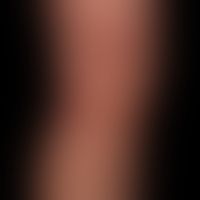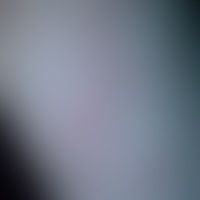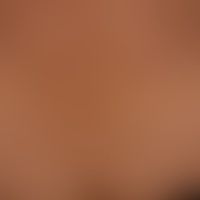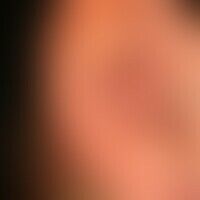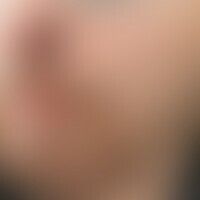Image diagnoses for "red"
877 results with 4458 images
Results forred

Airborne contact dermatitis L23.8
Airborne Contact Dermatitis: Retroauricular infection: This pattern distinguishes ACD from photoallergic eczema, where the "shadow area of the auricle" remains free.

Mononucleosis infectious B27.9
Mononuleosis, infectious. generalized (almost universal) macular exanthema.
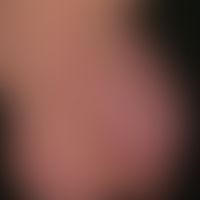
Striae cutis distensae L90.6
Striae cutis distensae: fresh (red) striae after many years of internal and local (steroid inhalation) therapy with glucocorticoids due to bronchial asthma.

Juvenile xanthogranuloma D76.3
Xanthogranulom juveniles (sensu strictu). solitary, soft elastic, yellowish, completely painless plaques. no darier sign! 8-month-old female infant. size growth in the first months of life.
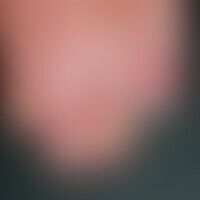
Candida paronychia B37.23
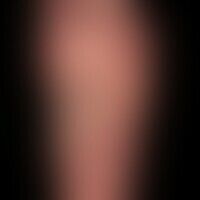
Livedoid vasculopathy L95.0
Livedovasculopathy: changes in the sole of the foot (rather rare localization)
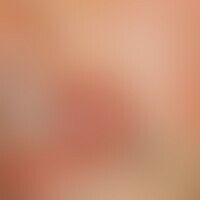
Tinea barbae B35.0
Tinea barbae. solitary, chronically dynamic, constantly progressive for 10 weeks, sharply defined, firm, itchy and painful, pustular, red, rough lumps, the hairs are painlessly epilated.

Acrodermatitis chronica atrophicans L90.4
Acrodermatitis chronica atrophicans. cigarette-paper-like wrinkles on the edematous swollen, flat erythematous right foot. a broad erythematous stripe ran along the tibia. the patient reported pain and instability while walking, but a neuroborelliosis was excluded.

Xanthogranuloma necrobiotic with paraproteinemia D76.3
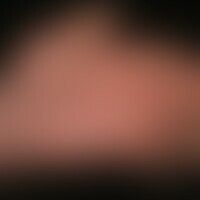
Dyshidrotic dermatitis L30.8
Eczema, dyshidrotic skin changes affecting both palms, chronically recurrent, partly vesicular, partly flat erosive, partly hyperkeratotic skin changes with formation of rhagades, which are particularly pronounced at the finger ends.

Lupus erythematodes chronicus discoides L93.0
Lupus erythematodes chronicus discoides. general view: For several years persistent, multiple, scarring, alopecic areas highlyoccipital, highly parietal and at the capillitium in a 57-year-old patient. Clear, extensive reddening of the skin of the head and face.
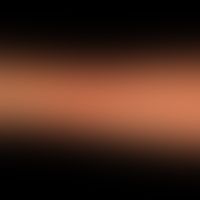
Aefi
AEFI: papular exanthema after flu vaccination, in places in linear arrangement (Koebner phenomenon).
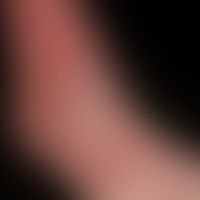
Pyoderma vegetating L08.0
Vegetative pyoderma of the back of the foot in the case of a previously known, long-standing venous leg ulcer; smearily coated wound bed, blurred edges.
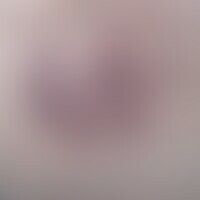
Herpes simplex virus infections B00.1
Herpes simplex virus infection: hemorrhagic, grouped vesicles in the area of the forearm.

Facial granuloma L92.2
Granuloma eosinophilicum faciei (Granuloma faciale). 6-month-old finding in a 7-year-old child. Slightly raised, moderately coarse, brown-red plaques with dilated follicle ostia. No other complaints. Brown-reddish infiltrate of the patient's own body under glass spatula pressure.
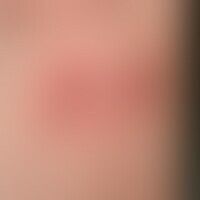
Mycosis fungoides C84.0
Mycosis fungoides, detail enlargement: Coin-sized oval plaques with atrophic surface and parchment-like folding on the lower leg of a 70-year-old female patient.

Dyshidrotic dermatitis L30.8
Dyshidrotic dermatitis: chronic recurrent hyperkeratotic dermatitis of the hands and feet. recurrent episodes with itchy blisters. no signs of atopy. no contact allergy

Nevus sebaceus Q82.5
Naevus sebaceus: congenital, initially unnoticed, bumped, red hairless area; for several months formation of a painless, repeatedly bleeding node (arrow mark) Dg.: Naevus sebaceus with formation of a solid basal cell carcinoma.

